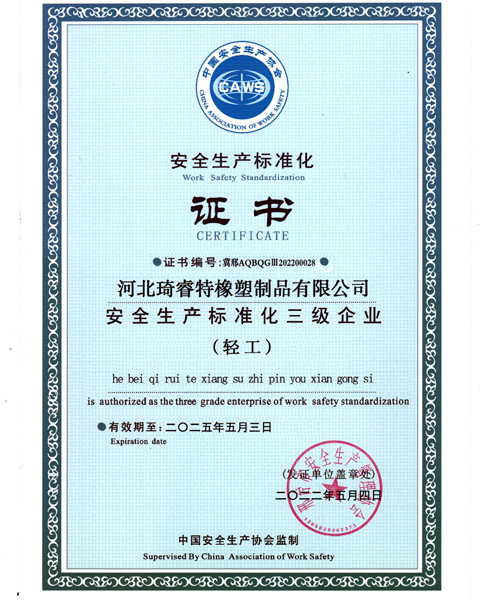Replacing High Pressure Power Steering Hose for Optimal Vehicle Performance
High Pressure Power Steering Hose Replacement A Comprehensive Guide
Power steering systems are integral to the smooth operation of modern vehicles, providing the driver with enhanced control and ease of steering. One of the critical components of this system is the high pressure power steering hose. If you're noticing leaks, strange noises, or difficulty steering, it might be time to inspect and potentially replace the high pressure power steering hose. This guide will walk you through the importance of the hose, signs that it needs replacement, and the steps to successfully replace it.
Understanding the High Pressure Power Steering Hose
The high pressure power steering hose connects the power steering pump to the steering gear or rack. Its primary function is to transport hydraulic fluid under high pressure from the pump to the steering mechanism. Over time, due to wear and tear, exposure to heat, and exposure to various contaminants, this hose can develop leaks or rupture, leading to a loss of power steering assist.
Signs of a Failing Power Steering Hose
Before tackling a replacement, it's crucial to identify the signs that your high pressure power steering hose is failing
1. Fluid Leaks Noticeable puddles of bright red or clear fluid under your vehicle can indicate a leak in the power steering system.
2. Whining Noises If you hear whining or moaning noises when turning the steering wheel, it may suggest low fluid levels due to leaks, possibly from the hose.
3. Stiff Steering Wheel Difficulty in turning the steering wheel can signal a loss of hydraulic pressure, often linked to issues with the high pressure hose.
4. Visual Damage Inspect the hose for any visible cracks, bulges, or abrasions. If you see any physical damage, it’s crucial to replace the hose immediately.
Tools and Materials Needed
To replace the high pressure power steering hose, you will need some tools and materials
high pressure power steering hose replacement

- New high pressure power steering hose - Power steering fluid - Ratchet and socket set - Wrench set - Screwdriver - Drain pan - Safety goggles and gloves
Step-by-Step Replacement Process
1. Prepare the Vehicle Start by parking the vehicle on a flat surface, engaging the parking brake, and turning off the engine. Allow it to cool down if it has recently been in use.
2. Locate the Hose Open the hood and locate the power steering pump and high pressure hose. Familiarize yourself with the connections.
3. Drain Fluid Place a drain pan underneath the power steering pump to catch any spilled fluid. Carefully disconnect the hose from the pump using the appropriate wrench, allowing the fluid to drain into the pan.
4. Remove the Old Hose Disconnect the other end of the hose from the steering gear. You may need to remove other components for better access. Once accessible, remove the old hose completely.
5. Install the New Hose Compare the old and new hoses to ensure they are identical. Install the new hose by connecting it first to the steering gear and then to the power steering pump. Make sure all fittings are tight to prevent leaks.
6. Refill Power Steering Fluid After installing the new hose, refill the power steering fluid reservoir with the manufacturer's recommended fluid. This can be vital as low fluid levels can lead to further damage.
7. Bleed the System With the wheels off the ground, turn the steering wheel from lock to lock multiple times to bleed any air from the system. Check fluid levels and top off if necessary.
8. Test the System Start the engine and check for any leaks around the new hose connections. Test the steering to ensure it operates smoothly without any unusual noises.
Conclusion
Replacing a high pressure power steering hose may seem daunting, but with the right tools and a bit of patience, it's a manageable task for DIY enthusiasts. Regular inspections and timely replacements can save you from more extensive repairs down the road and ensure the longevity of your vehicle’s power steering system. Always refer to your vehicle’s service manual for specific instructions and recommendations related to your make and model. If you’re unsure or uncomfortable performing the replacement yourself, it is advisable to consult with a professional mechanic.
-
Ultimate Spiral Protection for Hoses & CablesNewsJun.26,2025
-
The Ultimate Quick-Connect Solutions for Every NeedNewsJun.26,2025
-
SAE J1401 Brake Hose: Reliable Choice for Safe BrakingNewsJun.26,2025
-
Reliable J2064 A/C Hoses for Real-World Cooling NeedsNewsJun.26,2025
-
Heavy-Duty Sewer Jetting Hoses Built to LastNewsJun.26,2025
-
Fix Power Steering Tube Leaks Fast – Durable & Affordable SolutionNewsJun.26,2025

